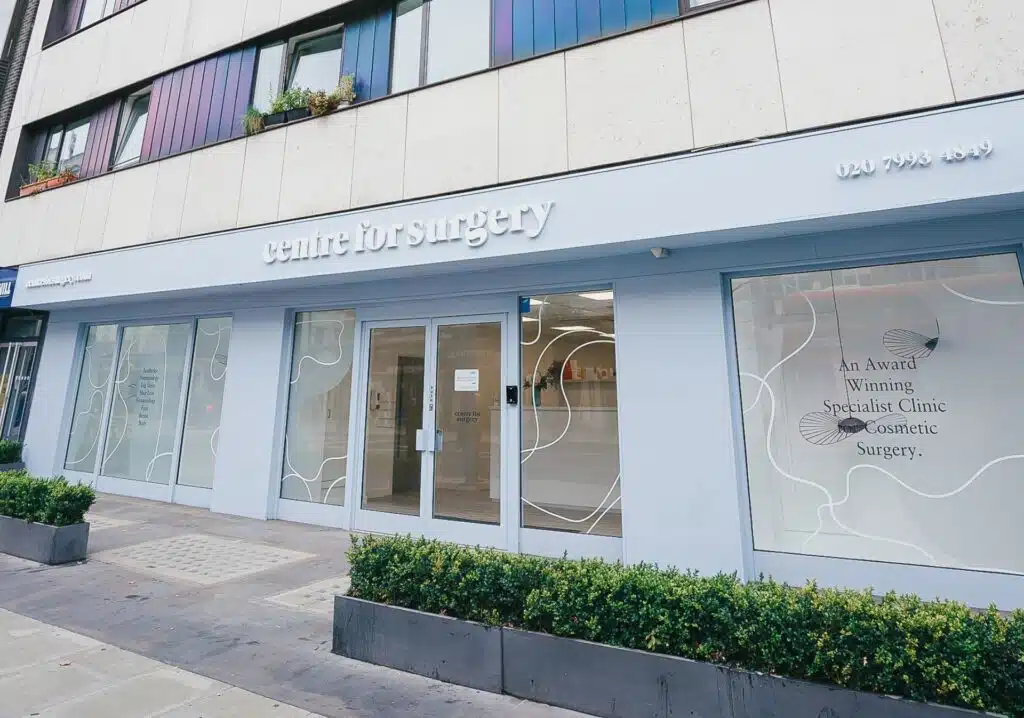Understanding and Addressing Vaginal Loosening
Vaginal loosening is a natural occurrence influenced by various factors such as ageing, genetic predisposition, childbirth, surgical procedures, and certain diseases. Despite its commonality, discussing vaginal loosening remains taboo for many, often leading to feelings of discomfort and embarrassment. This silence around the topic can prevent women from seeking information and solutions.
However, it’s important to recognise that vaginal loosening is a widespread experience among women. While it can be a source of concern, the good news is that there are effective strategies available to address it. These methods can help in tightening the vaginal area, offering relief from the physical and emotional impacts of vaginal loosening. Embracing these solutions can transform what was once a sensitive issue into a manageable aspect of women’s health.
What is Vaginal Loosening?
Vaginal loosening, often misunderstood, is a natural condition that affects numerous women at different stages of their lives. This condition is characterized by a decrease in the vaginal tissue’s elasticity, resulting in a feeling of increased laxity or ‘looseness’ in the vaginal area. It’s important to debunk the common misconception that sexual activity is a cause of vaginal loosening; in reality, this is not the case.
RELATED: Vaginal Rejuvenation vs Labiaplasty
The causes of vaginal loosening are diverse and primarily stem from natural physiological changes. These include the aging process, where the body’s natural collagen production decreases, leading to less firmness and elasticity in various tissues, including those in the vaginal area. Childbirth is another significant factor; during delivery, the vaginal muscles expand to accommodate the baby, which can sometimes lead to a lasting change in vaginal tightness. Additionally, certain surgical procedures or medical conditions affecting the pelvic region can contribute to this condition. Hormonal changes, particularly those associated with menopause, can also alter the elasticity and tone of vaginal tissues.
Causes of Vaginal Loosening
Vaginal loosening is a natural process experienced by many women and is not a cause for shame or embarrassment. There are several key factors that can contribute to the loss of elasticity in the vaginal area:
Age
As women age, their bodies undergo various changes. The production of collagen and elastin, proteins that provide tissue elasticity, decreases over time. This natural aging process can lead to a reduction in the firmness and elasticity of vaginal tissues.
Genetics
Genetic factors play a significant role in the overall health and resilience of bodily tissues, including those in the vaginal area. Women may inherit traits that influence the elasticity and strength of these tissues.
Menopause
During menopause, there is a significant decrease in estrogen production, a hormone crucial for maintaining the thickness and elasticity of vaginal tissues. This reduction can lead to thinning and loosening of the vaginal walls.
Childbirth
Vaginal delivery is a common cause of vaginal loosening. The muscles and tissues of the vagina stretch significantly to allow for the passage of the baby, which can sometimes lead to a permanent change in vaginal tightness.
Obesity
Excess weight can put additional pressure on the pelvic floor muscles, which can lead to weakening and a subsequent feeling of looseness in the vaginal area.
Smoking
Smoking can affect the health of connective tissue, leading to reduced elasticity in various parts of the body, including the vaginal area. The chemicals in cigarettes can degrade collagen and elastin, contributing to loosening.
Surgeries
Specific surgical procedures, like a hysterectomy, can impact the structural integrity of the pelvic floor and the vagina. These surgeries might alter the support systems of the vaginal area, leading to changes in tightness and elasticity.
Effective Solutions for Vaginal Loosening: Exploring Treatment Options”
Vaginal loosening, a common concern among many women, can be effectively addressed through various treatments. These treatments aim to restore the vagina’s elasticity, potentially enhancing sexual satisfaction and aiding in the management of urinary incontinence.
Vaginoplasty (Vaginal Tightening Surgery)
Vaginoplasty is a specialised surgical procedure aimed at enhancing the strength and tightness of the vaginal muscles, offering a solution for women experiencing vaginal laxity or urinary incontinence. This outpatient surgery is notable for its efficacy in addressing these concerns.
Vaginoplasty typically lasts between 60 to 90 minutes. During the procedure, the surgeon carefully removes excess vaginal lining and tightens the surrounding soft tissues and muscles. This process effectively narrows the vaginal canal, enhancing muscular tone and tightness.
Anaesthesia and Preparation
The surgery is usually performed under general anaesthesia, which ensures patient comfort throughout the procedure. Prior to surgery, patients undergo a comprehensive evaluation to assess their suitability for the procedure and tailor the approach to their specific needs.
Recovery Phase
Post-surgery, patients can expect a recovery period during which rest and limited physical activity are advised. The length of this recovery period can vary based on individual healing rates and the specific details of the procedure. Patients receive detailed aftercare instructions to ensure a smooth and effective recovery.
Benefits
The primary benefit of vaginoplasty is the restoration of vaginal tightness, which can significantly improve sexual satisfaction for those who have experienced a decrease in vaginal elasticity. Additionally, the procedure can offer relief from urinary incontinence, a condition often linked to weakened pelvic floor muscles.
Considerations and Aftercare
Patients need to consider the potential risks and benefits of the procedure, as with any surgical intervention. Regular follow-up appointments are crucial to monitor healing and address any concerns. Patients are advised to adhere to their surgeon’s recommendations regarding rest, hygiene, and when to resume normal activities, including sexual intercourse.
Long-Term Outcomes
Many women report a high level of satisfaction with vaginoplasty results, noting improvements in physical comfort and self-confidence. The procedure’s long-term success depends on various factors, including adherence to post-operative care and the individual’s overall health.
Vaginal Laser Treatment (Fotona Smooth)
Fotona Smooth represents a modern, non-surgical alternative for women seeking vaginal tightening without the complexities of a surgical procedure. This innovative approach utilizes advanced laser technology to enhance vaginal firmness and elasticity with minimal downtime.
Fotona Smooth employs a controlled laser beam to non-invasively target the vaginal tissue. Unlike traditional surgical methods, this procedure does not require incisions, numbing creams, or anaesthesia, making it a convenient option for those hesitant about surgery. The laser technology used in Fotona Smooth works by gently heating the vaginal tissue. This controlled heating stimulates the natural production and regeneration of collagen and elastin within the vaginal walls. These proteins are essential for tissue elasticity and firmness, and their increased presence helps to naturally tighten the vaginal canal.
Benefits
One of the primary benefits of Fotona Smooth is its non-invasive nature, eliminating the need for a lengthy recovery period typically associated with surgical procedures. The treatment is generally quick, comfortable, and requires no downtime, allowing patients to resume their daily activities immediately after the session.
The number of Fotona Smooth sessions required can vary depending on individual needs and desired outcomes. Each session is relatively quick, typically lasting only a few minutes. The procedure is usually carried out in a series of sessions spaced a few weeks apart to achieve optimal results.
Fotona Smooth is known for its safety and comfort. The laser settings are precisely controlled to ensure effective treatment without causing damage to the surrounding tissues. Most patients report a warm sensation during the procedure, with minimal to no discomfort.
Long-Term Effects
Patients undergoing Fotona Smooth often observe noticeable improvements in vaginal tightness and elasticity. The regeneration of collagen and elastin not only enhances the structural integrity of the vaginal tissue but can also contribute to improved sexual satisfaction and a reduction in symptoms of urinary incontinence.
O-Shot
The O-Shot, or Orgasm Shot, is an innovative medical procedure designed to enhance vaginal rejuvenation using the body’s natural growth factors. This procedure has gained popularity for its non-surgical approach and the potential benefits it offers in terms of vaginal tightening and responsiveness.
The O-Shot involves drawing a small sample of the patient’s blood during the appointment. This sample is then processed to isolate and concentrate the growth factors, which are natural substances in the blood that facilitate healing and tissue regeneration.
Once isolated, these growth factors are injected into specific areas of the vaginal tissue. The injection sites are strategically chosen to maximise the treatment’s effectiveness in improving the vaginal area’s structural integrity and responsiveness. The key to the O-Shot’s effectiveness lies in its ability to stimulate the production of collagen and elastin within the vaginal tissues. These proteins are crucial for maintaining tissue firmness and elasticity. The increased production leads to a tightening effect, improving the overall feel and function of the vaginal area. Women who undergo the O-Shot often report a range of benefits. These include enhanced vaginal tightness, increased sexual responsiveness, and sometimes an improvement in urinary incontinence symptoms. The procedure can also lead to increased natural lubrication and improved sexual satisfaction.
The O-Shot is noted for its safety. It uses the patient’s own blood, reducing the risk of allergic reactions or infections. The procedure is generally well-tolerated, with minimal discomfort during the injections.
Recovery and Results
Recovery time after the O-Shot is typically minimal, allowing patients to return to their normal activities soon after the procedure. The full effects of the treatment develop over several weeks as the body’s natural regenerative processes are activated.










